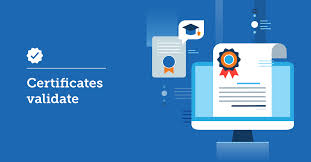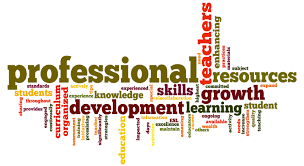
Personal Learning Path
In today’s digital age, the ability to learn and grow is no longer confined to traditional classrooms. The internet has opened up vast opportunities to acquire knowledge and skills from a variety of free resources. Whether you’re aiming to enhance your career, shift industries, or simply pursue a personal interest, creating a personal learning path with free resources can be a game-changer. However, to fully benefit from the wealth of free online tools and platforms, it’s essential to approach your learning systematically.
Here’s a step-by-step guide to help you create your own personalized learning path using free resources.
Step 1: Define Your Learning Goals
Before diving into free resources, it’s important to define what you want to learn. Are you looking to:
- Gain a new skill for career advancement (e.g., programming, graphic design, marketing)?
- Learn a new language?
- Explore a personal interest (e.g., photography, writing, history)?
- Prepare for an academic exam (e.g., GRE, SAT, or professional certification)?
- Master a specific software or tool (e.g., Excel, Photoshop, or WordPress)?
Clear, specific goals will help guide your path and keep you motivated. For instance, instead of a vague goal like “learn coding,” you might aim to “learn Python for data analysis” or “build a personal website using HTML, CSS, and JavaScript.”
Step 2: Assess Your Current Knowledge and Skills
Knowing where you stand in terms of knowledge is crucial. If you already have some foundation in your area of interest, you may want to start with more advanced resources. If you’re a beginner, it’s essential to start with foundational courses to avoid feeling overwhelmed.
- Beginner: Focus on foundational courses or introductory materials. These will help you build a solid base without overwhelming you.
- Intermediate: Look for resources that deepen your understanding or offer specialized knowledge in your field.
- Advanced: Seek out specialized courses, case studies, or industry certifications to further develop your expertise.
Step 3: Choose the Right Free Resources
There are countless free platforms offering a range of educational content, but not all resources are created equal. The best approach is to use a combination of platforms that suit your learning style, whether that’s through video lectures, reading materials, or interactive exercises. Here’s a list of popular free resources you can use to create your learning path:
- Coursera & edX (Free Course Audits): These platforms partner with top universities and institutions to offer high-quality courses. While certificates require payment, you can audit many courses for free, which gives you access to the lectures, assignments, and other course materials.
- Khan Academy: This platform is ideal for learners at any level, particularly K-12 and introductory college courses. It provides interactive exercises, quizzes, and in-depth lessons in subjects ranging from math and science to history and economics.
- YouTube: A treasure trove of tutorials and lectures. You can find high-quality content for almost any topic, from learning new software to studying advanced subjects like artificial intelligence.
- Skillshare (Free Trial): Although Skillshare offers a subscription, they often provide free trials that you can use to take as many courses as you want during the trial period. It’s great for creative fields like design, photography, and marketing.
- MIT OpenCourseWare: For more academically rigorous content, MIT’s OCW provides free course materials, including lectures and assignments, from MIT’s most popular courses.
- Duolingo: If learning a new language is part of your path, Duolingo offers a free, gamified experience for over 30 languages, making learning engaging and fun.
- Duolingo & Babbel: If learning a new language is part of your path, Duolingo and Babbel provide engaging, free (and freemium) resources to practice speaking, listening, and grammar.
Step 4: Create a Structured Learning Plan
While it’s tempting to jump from one resource to another, creating a structured learning plan will help you stay on track and measure your progress. Here’s how to organize your plan:
- Set a timeline: How much time can you realistically dedicate to learning each week? Break down your goal into manageable chunks. For example, you might aim to complete one course per month or study for an hour every day.
- Break down your goal into milestones: Large goals can be overwhelming. Break them down into smaller, measurable milestones. For example, if you want to learn Python, your milestones could be:
- Learn basic syntax and variables.
- Build a simple project (like a calculator).
- Master libraries like NumPy or Pandas for data analysis.
- Prioritize your learning path: Depending on your goals, some topics will be more urgent than others. Prioritize foundational knowledge, then move to intermediate and advanced topics.
- Use multiple formats: Mix up your learning formats. Use videos for theoretical concepts, practice problems for hands-on learning, and books or articles for in-depth study.
Step 5: Engage with a Community
Learning is often more effective when you’re part of a community. Look for forums, social media groups, or online communities related to your learning goals. For example:
- Reddit has countless subreddits for different fields of study, where you can ask questions, share progress, and interact with others.
- Stack Overflow is excellent for coding-related queries, while GitHub lets you collaborate on coding projects and learn from open-source communities.
- LinkedIn Learning Groups or Facebook Groups offer valuable peer-to-peer interactions and industry-specific discussions.
Having others to talk to not only provides motivation but also exposes you to new perspectives and resources you might have missed on your own.
Step 6: Track Your Progress and Stay Flexible
Tracking your progress is crucial to maintaining momentum. Here’s how you can do this:
- Set a progress tracker: You can use apps like Trello, Notion, or a simple spreadsheet to monitor your milestones and the courses you’ve completed.
- Review and reflect: Periodically, look back on your progress. Are you meeting your goals? If not, why? Adjust your timeline or resources accordingly.
- Stay flexible: Learning is an evolving process. If you find that you prefer certain resources over others or you discover new platforms, incorporate them into your plan.
Step 7: Apply What You Learn
The best way to cement new knowledge is by applying it. Whether you’re learning coding, writing, or graphic design, make sure to put your new skills into practice. Build projects, participate in challenges, or even teach what you’ve learned to others.
For example:
- Build a portfolio: If you’re learning design or coding, create a portfolio to showcase your work.
- Start a blog or YouTube channel: Share your learning journey, insights, or tutorials with others.
- Contribute to open-source projects: If you’re learning coding or software development, contributing to GitHub projects is an excellent way to gain real-world experience.
Step 8: Stay Consistent and Curious
Learning is a lifelong journey. Even after you’ve reached your immediate goals, continue to explore new topics and refine your skills. The more you practice, the more you’ll learn—and the more motivated you’ll become.
Conclusion
Creating a personal learning path with free resources requires a thoughtful and structured approach. By setting clear goals, assessing your current knowledge, choosing the right resources, staying engaged with communities, and applying what you’ve learned, you can successfully navigate the world of free online education. With so many free tools at your fingertips, there’s no limit to the knowledge you can acquire in 2024 and beyond. So, start planning today and embark on your personalized learning journey!



